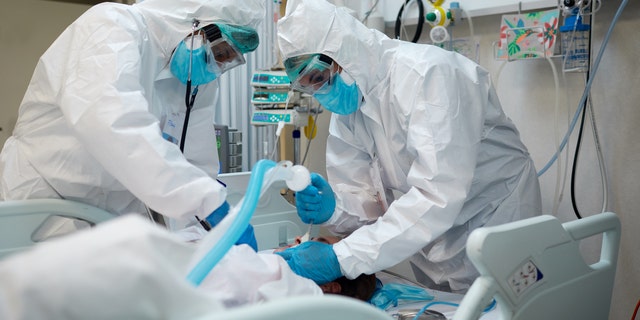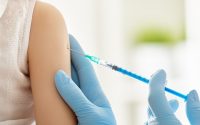One-year mark since first coronavirus case in China: reports

Mask mandate is the way to stop coronavirus and rebuild economy: Biden
Joe Biden urges Congress to pass coronavirus relief bill; research fellow at The Heritage Foundation Joel Griffith with reaction.
Tuesday marks one year to the day of China’s first diagnosed case of the novel coronavirus, per multiple reports.
The South China Morning Post in a story published in March cited government data of the first coronavirus infection dating back to November 17, 2019. (On Tuesday that same outlet suggested the virus may have been in Italy as early as September.) The outlet reported that a 55-year-old person from Hubei province may have been the first individual infected with the novel virus.
CLICK HERE FOR FULL CORONAVIRUS COVERAGE
Since the deadly novel virus first gained international attention, over 55.2 million infections have occurred around the world, with over 1.3 million deaths, per data from Johns Hopkins University.
The U.S. has reported more coronavirus infections and deaths than any other country in the world, topping 11.2 million cases and over 247,200 lives lost, per data from the university.

Over 55.2 million infections have occurred around the world, with over 1.3 million deaths, per data from Johns Hopkins University. (iStock)
One year later, however, there is also hope. Over the past two weeks, drug companies Pfizer and Moderna have both come forth announcing vaccine candidates that are over 90% effective (94.5% for Moderna), according to interim analyses.
According to documentation from the WHO, last updated Nov. 12, there are 48 vaccine candidates in clinical evaluation and over 160 in the early phases of evaluation.
In addition to possible vaccines, Gilead Sciences’ remdesivir was the first official FDA-approved coronavirus treatment, and convalescent plasma was granted an emergency use authorization (EUA) from the FDA. Patient care has also evolved — with earlier reports voicing health care workers' hesitance to use ventilators over concerns it could worsen patients' conditions, not to mention a trial-and-error process with administered drugs, including hydroxychloroquine and the HIV-drug combo lopinavir-ritonavir, which were both dropped from a large World Health Organization study over the summer.
But these advances come against a backdrop of increasing cases both in the United States and around the world.
The seven-day moving average of daily new cases in the U.S. is topping 160,000, which has been on a sharp rise since early October, according to data compiled by Johns Hopkins University. Italy is also experiencing a sharp uptick with over 35,400 new daily cases, per the seven-day moving average, and is joined by the UK with its more than 25,000 new daily infections. Likewise, Brazil is also on the climb with its daily cases exceeding 23,000, and Russia is experiencing a clear rise with 22,000-plus daily infections – all per the seven-day moving average.
HOW DO THE MODERNA AND PFIZER CORONAVIRUS VACCINES COMPARE?
As Moderna and Pfizer continue to gather the required two months’ worth of safety data needed for emergency approval from the FDA, surging infections due to public noncompliance are overwhelming hospitals nationwide and straining staff.
“Now we’re seeing more cases because there is not enough public health compliance,” Fox News medical contributor Dr. Marc Siegel told “Fox & Friends” on Monday. “And that's a big problem for me when the hospitals start to get full.”
Until a safe and effective vaccine is approved, health officials resoundly urge masks, physical distancing, hand hygiene and avoiding crowds where possible.
Fox News' Talia Kaplan contributed to this report.
CLICK HERE TO GET THE FOX NEWS APP
Source: Read Full Article


